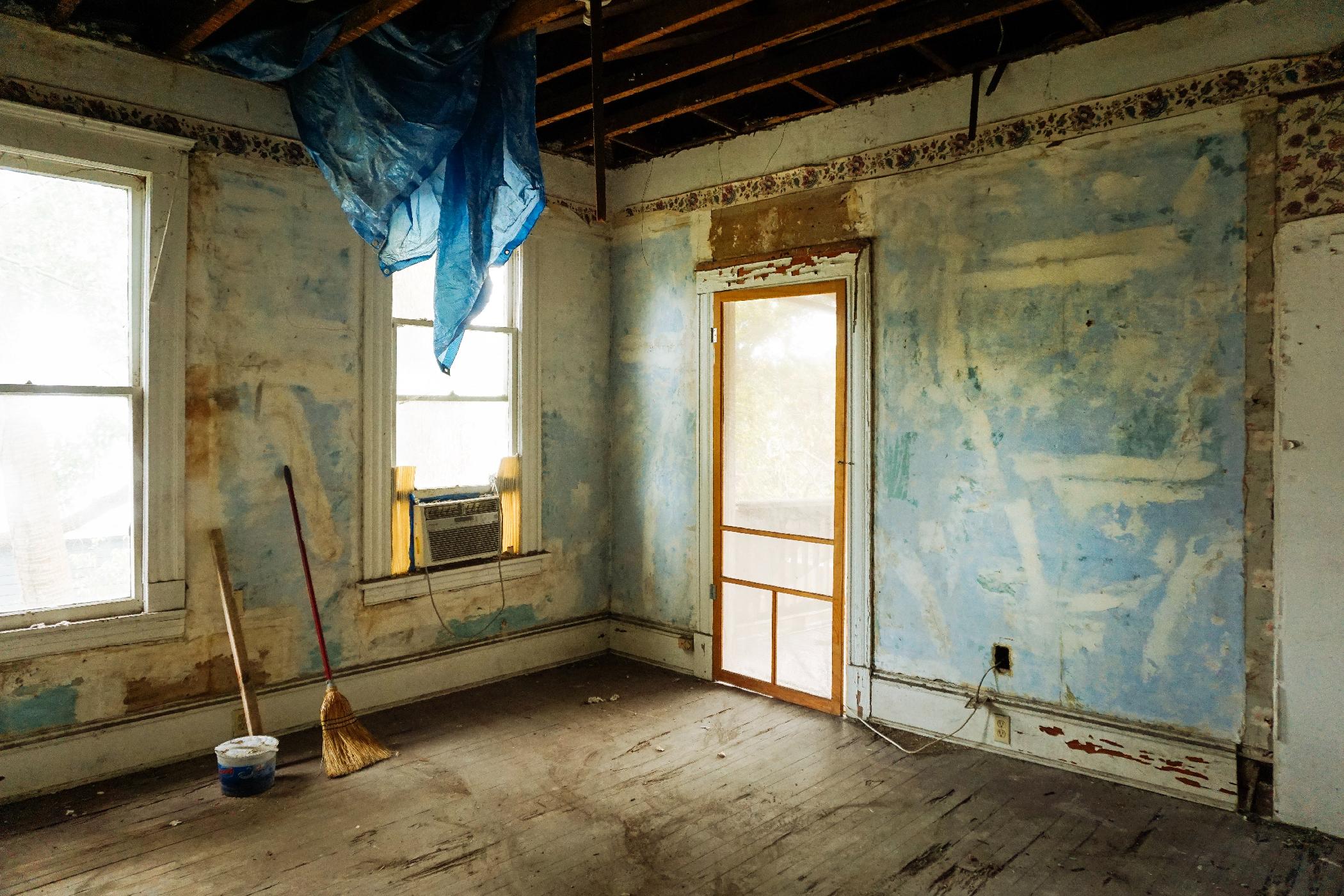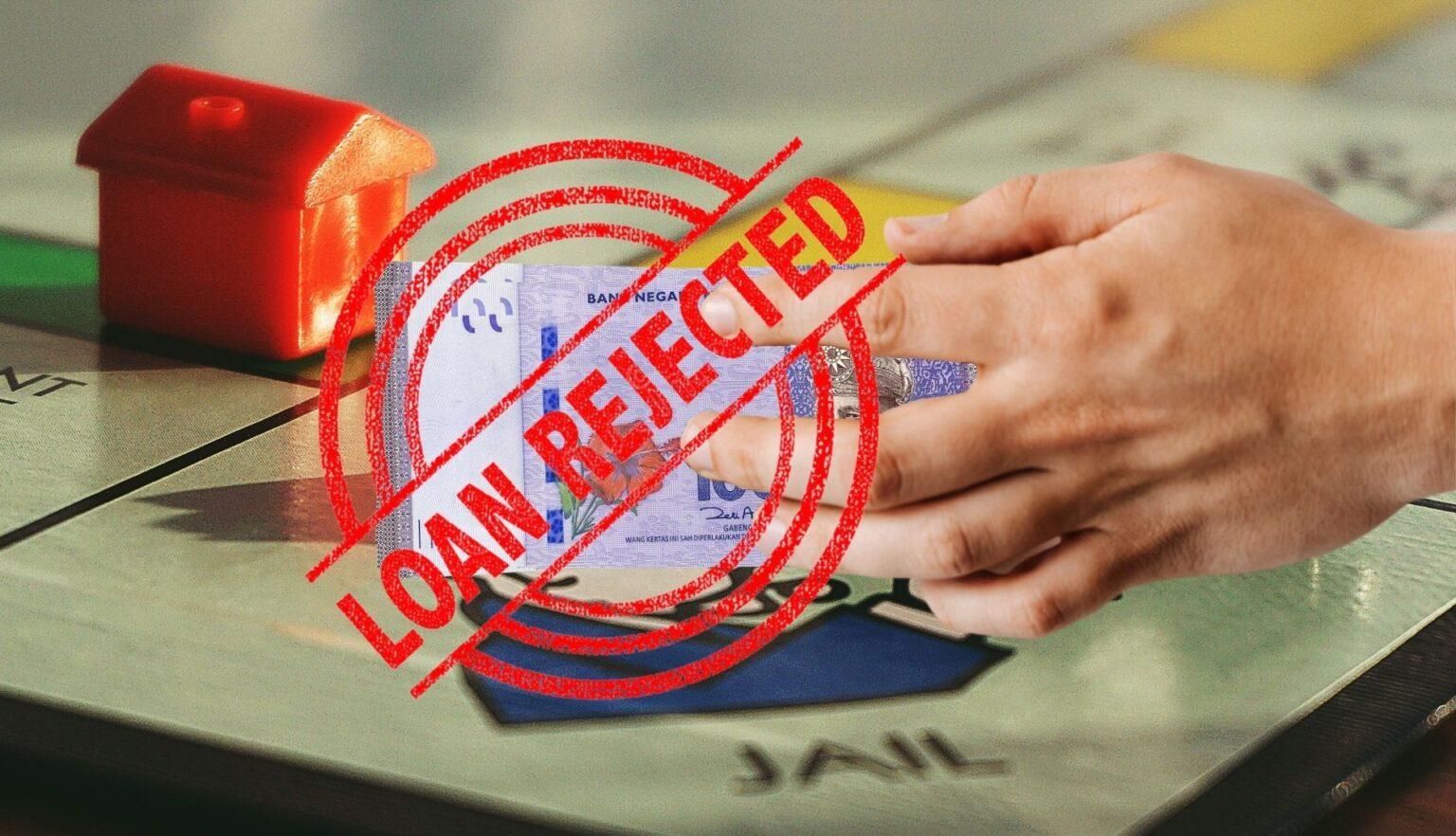This step-by-step guide will help you decide if you have what it takes to flip for the first time, with a good chance of doing it profitably.
You’ve seen it, read about it, or heard about it – The insane profits that property flippers make. Hunting for an investment property, giving it a makeover, and selling it for a steep profit over and over again also seems the best job in the world.
The only thing holding you back is fear of the unknown. The market has ups and downs. In the last 5 years, it appears to have more downs. What if you buy a property that doesn’t appreciate? What if the market crashes just after you buy to flip? Given the investment size in a property, these fears are well-founded.
This step-by-step guide will help you decide if you have what it takes to flip for the first time, with a good chance of doing it profitably.
You’ve seen it, read about it, or heard about it – The insane profits that property flippers make. Hunting for an investment property, giving it a makeover, and selling it for a steep profit over and over again also seems the best job in the world.
The only thing holding you back is fear of the unknown. The market has ups and downs. In the last 5 years, it appears to have more downs. What if you buy a property that doesn’t appreciate? What if the market crashes just after you buy to flip? Given the investment size in a property, these fears are well-founded.
Let’s see if you have what it takes to jump onto the flipping bandwagon.
How do you flip houses for a living?
Some people successfully flip houses for a living. However, you must know that successful flippers, like in any profession, are a small percentage of the total. Not all flippers make exorbitant profits. Exactly how much does the average flipper make? Unfortunately, we have no data for this statistic in Malaysia. My guess is between 30% to 40% in gross returns.
For the most part, flipping houses is speculative in nature as you are anticipating that your property price appreciates. If you are making predictions about the market, you could be gambling. No one builds consistent profits by gambling. Instead, you must manage the speculative element of flipping.
Also, you have to dedicate a lot of time. You need to do research, find good deals, learn how to renovate, and build relationships with contractors, real estate agents, lawyers, bankers, auctioneers, and other successful flippers. In short, flipping is like having a full-time job. If you already have one, the time commitment from flipping can be taxing. If you’re unwilling to or find it difficult to clock in the hours, you shouldn’t be flipping for a living.
How to flip a house for the first time in 7 steps
You will find it near-to-impossible to find a good deal. It’s not as simple as visiting an online property portal and finding houses that are below market value the next minute. Thus, you will have to build a network of reliable agents who will keep an eye out for good deals on your behalf. You will need to regularly scan online property portals, basically be prepared to go through hundreds if not thousands of listings before you find a good deal. That translates to roughly 1,000 hours (42 full days with no sleep) of looking before the right deal comes along.
Once you’ve assessed your finances, you will know what category of house you can afford to invest in. The next step would be to choose the right property. This is followed by renovations. You have to be cost-efficient with your renovation. Finally, you must have a solid marketing approach to sell the house as fast as possible. Time is a cost and the sooner you can flip, the less your time-cost.
1. Capital Requirements: You will need more money than you think
Flipping a house is capital intensive. Regardless of whether you acquire financing or not, you will need a lot of capital. You must have enough cash to purchase the house, cover closing costs, and refurbish the house to above-average standards.
If you can get a mortgage of up to 90% of the value of the house, you will need to have at least 25% of the value of the house for the deposit, closing costs, and renovations. As an example, if you’re buying a house for RM500,000 and can get a 90% mortgage, you’ll need to have about RM125,000 in cash. This is a rule of thumb but can vary by a lot.
Let me illustrate.
A typical downpayment amount is 10% of the home value, unless you do a mark-up purchase which I strongly discourage. If you already own 2 houses, you will only be eligible for 70% financing on the next house you buy. This would mean you would need 30% excluding closing and renovation costs. Closing costs amount to roughly 5% of the purchase price – these include legal fees, stamp duties, and valuation fees.
Since the deposit and closing costs are pretty much fixed and renovation is where the greatest variance is, you must develop a remarkable competency in this area. On your first few flips, go for houses that do not require major renovations to keep your capital expenditure low. Get experts to inspect the house for you before you make a purchase. Things you need to be careful about include roofing, plumbing, electrical wiring, and structural integrity.
You must have a vision of what needs to be done with the house you’re going to buy. Have reliable people who can give you an estimate of what it would cost to implement your vision. This will help you estimate the amount of capital required. If the deal slips through your fingers because you needed time to figure out the renovations costs, so be it. You can find another house. This is less of a headache than underestimating the costs.
2. Securing a Mortgage: Is this the best move?
Most people buy a house with a mortgage. And it’s a good thing – the less money you put into an investment property, the higher your potential returns. However, if you’re flipping a house, a mortgage has 2 downsides:
- Most mortgages have a lock-in period. That means, if you pay off the entire mortgage before a stipulated time frame, you will be charged a penalty. This penalty can be as high as 5% of the loan amount and eats into your profits.
- You have to make monthly loan repayments from the date the money is disbursed to you. That means while you’re renovating, and then while you’re trying to find a buyer, you have monthly payments to make to the bank. Your cash flow will be impacted and you will be under a lot of pressure to find a buyer as soon as possible.
Therefore, when financing a buy-to-flip house, do the following:
- Get a mortgage with no lock-in period. Such mortgages exist and you have to scout around.
- Buy a house that is priced well below the loan amount you can qualify for. If you can qualify for a RM500,000 loan, buy a house that’s 30% below this price.
Personally, I prefer to flip without financing as the risk of defaulting on payments to the bank is eliminated. You can partner with friends to raise the cash. Bringing other partners in has its own set of problems though. When you flip without financing, the returns in terms of a percentage is much lower because you have to raise more capital. However, the absolute returns are higher.
3. Figure out your cash flow: The net cash inflow or outflow from holding the property
Your recurring outflows to keep and maintain the house while you look for a buyer will include the following:
- Monthly loan instalments
- Home Insurance
- Utilities
- Building maintenance and sinking fund fee
- Taxes (annual property assessment tax, quit rent, and other taxes)
You have to be meticulous in calculating all your recurring costs and ensure these are calculated on a monthly basis. For example, your annual property assessment is billed to you on a yearly basis. You can divide it by 12 to get a monthly figure. If you cannot afford the monthly cash outflow, you may have to consider purchasing a cheaper house or refrain from investing altogether. Remember, your cash flow is only effective until you sell the house. So, if you have negative cash flow, the faster you flip, the more profitable you’ll be.
4. Choose the right house
Do this carefully because you can’t go back on this one. Let’s assume the following:
- You have RM100,000 cash available for your first flip
- You can afford a cash outflow of RM2,200 every month for the next 1 year
- You are eligible for a 90% mortgage.
If the RM100,000 is supposed to make up 25% of the value of the house, you can afford to purchase a house that costs RM400,000 (RM100,000/0.25). However, using the property investment calculator I have come up with, you will see that the monthly mortgage payments (30-year mortgage at 4% interest) plus other monthly expenses can bring the cash outflow to above RM2,200.
You’ll have to fine-tune the price of the house and the other cost variables to ensure that your monthly outflow does not exceed RM2,200. After some fine-tuning, you’ll discover that you can afford a house priced at RM300,000, which gives you an outflow of less than RM2,200.
You must now find houses at this price point. All the houses you look at must be below market value (BMV). Always remember, that you must sell the house you buy at a higher price. Your best chance of doing this to buy BMV. How much BMV, you ask? You must use the “Rule of 70.” We will look into this in the next section.
Look for properties that need some fixing and beautification. They’re called “fix-me-upper” houses. Ensure no major structural, electrical, plumbing, and roofing problems exist. You want to keep your renovation costs low. Get professionals to inspect the house for you. This is an extremely important step towards selecting the right house.
Also, ensure that the houses you look at are in good locations. Ideally, the house should have the following location attributes:
- Within 500 meters of a public transportation node (bus stop, LRT, MRT, or monorail)
- Within 500 meters of amenities like shops and restaurants
- Within a 3KM radius of a school
- Plenty of jobs available close by (look for offices, malls, business centres)
Don’t get too hung up on being close to LRT or MRT stations. Bus stops are as good.
5. Use the 70% Rule to determine your property purchase price
The “Rule of 70” or the “70% rule” states that you should not pay more than 70% of the after-repair value (ARV) of the house, after deducting repair costs. ARV refers to the value of the house after you perform all the renovations and repairs on the house. This is hard to calculate if you’re not a valuer. But you can arrive at a close approximation.
First, you must know the highest market value of the house .i.e the value at which a bank would be willing to give a mortgage for the house. You will need to have a good banker or mortgage specialist to help you with this. You want to know the highest bank value because your future buyer is most probably going to apply for a mortgage to buy your house. If banks are unwilling to provide a mortgage at your asking price, selling the property will be difficult.
Second, valuers usually allow 50% of your renovation costs to be included in the final value of the house. This is limited to repairs and beautifications on the house. It doesn’t include loose furniture. So built-in cabinets would count but a bed or sofa set wouldn’t. Now, let’s say you find out that the bank value of a house is RM500,000 and you are also going to spend RM50,000 on renovations excluding loose furniture.
Thus, you could estimate the ARV of the house at RM525,000. Therefore, the 70% rule would apply as follows:
Purchase Price = 70% x (ARV – Repair Costs)
= 70% x (RM525,000 – RM50,000)
= 70% x RM475,000
= RM332,500
This is how much you can pay for this house. Finding a BMV house that conforms to the 70% rule is difficult. That is why the search will take time, they do exist but you have to patiently hunt. You can leverage real estate agents, bankers, and lawyers to find BMV properties.
Another good place to look at is property auctions However, buying auction properties requires a different set of skills and is not recommended unless you understand how it works.
6. Renovating the house: Basic tips to make an impact
This is perhaps one of the most important areas of focus if you want to flip a house right on the first try. You must aim to make the house look stunning at the cheapest cost and you should spend 70% of what the average person would spend to do the same renovation. In this way, you are adding value for prospective buyers.
Your best bet is to find freelance tradesmen who are top-notch at their areas of speciality. You will need to find the following experts – painter, carpenter, plumber, electrician, builder / general workman and roofer.
Freelance tradesmen are usually cheaper than a turnkey contractor. The house you buy should also require minimal major renovations. If you have to tear down a major portion of the house and reconstruct it, you may not have the competency to execute a project of that magnitude with a group of freelancers. In such cases, you will need an architect and a contractor who can put everything together for you.
You also need to know the most effective way to renovate a house. The areas you want to focus on with renovations are as follows:
Painting – a skilled painter can do a fantastic job with painting and it is amazing how great a house looks simply with a fresh coat of paint. The colours you use must be aesthetically pleasing. Don’t have too many colours competing with each other.
- Kitchen – a functional and beautiful kitchen is a big pull-factor for buyers.
- Bathrooms – buyers usually prefer houses with renovated bathrooms.
- Built-In wardrobes and cabinets – provide your prospective buyers with beautiful storage space, and they’ll find your house irresistible.
- Lighting – good lighting can make your house look stunning during viewing presentations.
7. Selling the house: Time Is of the Essence
This is where the actual flip takes place. Ideally, as soon as the renovation for the house is completed, you find a buyer and the house is sold. For this to happen, the house needs to be attractive. Remember, homebuyers have many options. They are usually looking at more than just one house. Your offer must be irresistible. By irresistible, I don’t mean cheap. Prospective buyers should see a lot of value.
Think about this. You see 2 houses for sale – one priced at RM480,000 (House A) and the other priced at RM525,000 (House B). House A requires about RM30,000 in renovations to make it look nice. You’ll have to fork out this money on your own as banks rarely finance renovations.
On the other hand, House B is gorgeous. You’re in love with how it looks. It’s in move-in condition. You don’t have to fork out any additional money for renovations. In fact, if you tried to renovate to the same specifications as House B, you may have to spend RM70,000. House B also has a bank value equal to its asking price.
The difference in monthly mortgage payments between House A and House B is only RM193. Which house would you be inclined towards? Most people would be drawn to House B. It’s more expensive but it offers a lot in value.
Your marketing of the house also needs to be top-notch. Presentation is vital when it comes to selling your house. You have to do the following in terms of presentation:
- Hire a professional photographer to take great photos and distribute this to all your agents
- Write a summary of the house with all the benefits it comes with. Highlight the quality of your renovation. Let prospective buyers know how much effort you put into the renovations. Prospective buyers should be aware that it would cost them more money to do what you’ve done to the house.
- Ensure the house is always in showroom condition. It should be clean, looks stunning, and smelling great. Have the air-conditioning turned on before prospective buyers arrive. Turn on soothing music.
Your presentation must be supported by a good team of salespeople. Engage 5-7 competent real estate agents to sell your house. Take each agent on a walk-through of your house, explaining all the benefits to them so they can sell better. Follow up with your property agents regularly. Replace those that are not performing. Organise open houses with your agents. I’ve found that open houses are fantastic for sales.
Give yourself and your agents a deadline for the sale. Work towards meeting that deadline. Without a deadline, it is easy to overlook the urgency of time and time is a major cost when you’re flipping houses.
This article was first published as "How to flip a house for profit in Malaysia" on iProperty.com.my.

.jpeg)



.png)
.png)






.jpeg)
